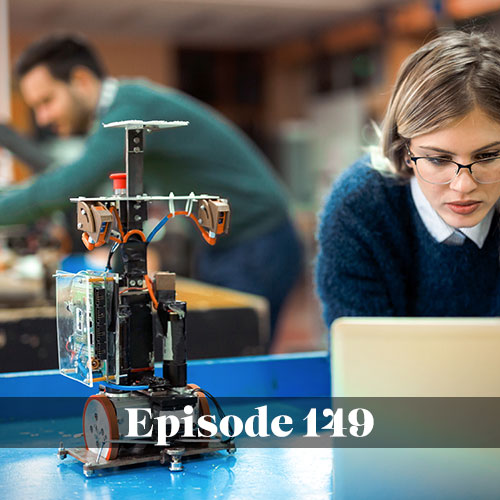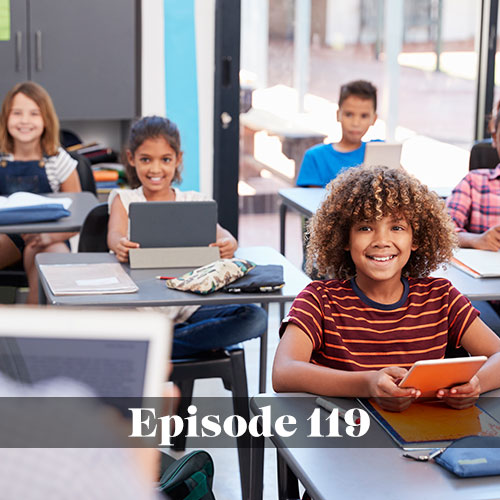This week’s show is a continuation about trends in technology. Carole welcomes back Keith Pomeroy, the Chief Technology Officer at Upper Arlington Schools in Ohio to fill us in on the latest and the greatest technology trends.
“You have to be open to flexibility… and you have to talk to kids. Pay attention to what’s happening in their world.”
Design Thinking
An up and coming trend in technology is design thinking. This concept comes from a company IDEO and while it lives primarily in design companies currently it is finding its way into public schools. Design thinking is essentially design of a product but also the design of experiences using human centered design. It frames design around the user and the user experience. There are a couple of schools who have been fortunate enough to work with the MIT fab lab. In some cases, students have designed storage solutions for their classroom with software and 3D print their prototypes. Another example is a group of first grade students who wanted to research a relevant problem in their area. They came upon a bat population at a nearby land. In groups the students created prototype bat houses that protected the bat population from prey. Students then input their designs into a software program that allowed their designs to become a reality. They went from research, to prototype, to production and construction.
Robotics
Throughout many industries we see robotics being used and utilized. The learning that can occur in robotics is immense. In public schools, our shop classes across the US once focused on manufacturing and designing goods, but shifting them into engineering further and robotics brings back relevance to classes like this.
Online Platforms
Your ability to meet children where they are technologically personally is essential to supporting and educating students. Making their school life look more like their outside life is logical as opposed to asking students to stop engaging with technology when they walk into school. Students engage with Google Docs, Schoology and other platforms, but understanding how they interact with platforms socially and educationally can work symbiotically.
Technology changes so significantly we need to be able to evolve with it and meet the needs of users, whether they are students, teachers, parents or community members. Change is continuous. Education is not necessarily used to working at this speed, but being flexible and engaging students in conversation about technology is essential.
Follow Keith on Twitter @keith_pomeroy
Contact Keith Pomeroy: kpomeroy@uaschools.org






